The young man, though, was in a hurry to leave an imprint. After spending a few months, Rana quickly realised that the venture has been languishing in the revenue zone of a ‘few lakhs’ for over a couple of years. In his eagerness to prove his mettle, he swiftly devised a disruptive plan. The first area to get drastically overhauled was outdoor branding and advertising. He printed loads of ‘Bosh’ stickers and started sticking them on cars, scooters and all kinds of vehicles to uplift the visibility of the brand across the city.
The ploy was interesting. Apart from the name of the brand, nothing else was mentioned on those stickers. It piqued curiosity among people who wanted to find more about the brand. Enhanced visibility, coupled with an aggressive marketing push across the state, led to a brisk uptick in sales. The operations—especially the factory—were also revamped to improve efficiency. New machines were installed, the production area was optimised and the productivity level of employees went up by a few notches. The result was for all to see. Over the next two years, the revenue graph entered into the crore tangent, and Rana expanded the footprint of the brand beyond the state.
The pacy growth, though, came at a price. There were recurrent clashes between the young entrepreneur and the old order, which was not only loyal to senior Rana but also vociferous about the changes made in the regimented style of functioning. With every passing day, the friction increased, and the climax reached when the son decided to have a candid one-on-one with the patriarch.
![]()
Rana started the conversation with a straightforward pitch. “I want to start my own business," he urged, underscoring how the necessity of taking approvals for even the minutest of things and his endless struggle to continue with his style of functioning were inhibiting his personal and entrepreneurial growth. The bold-faced founder laughed. “The life and the riches that you have are all because of me," he underlined. “On your own, you"ve not made a single dollar in your life. You should be thankful for what you have," he chided his son.
For Rana, the dressing down made him realise a cruel reality: The air cooler was his dad’s venture. “The fine print was that it was not my business," recalls Rana, who decided to go back to the US in 1997 and try his luck. Though all he had was a dollar and a dream, Rana’s passion to start his own venture was cramped by a glaring absence of capital. After a few months of futile hustle, he decided to return to India, and made a stopover in Hong Kong to meet his maternal uncle, who was in the business of trading commodities. Rana was impressed with the business model: Buy cheap from China, add hefty margins, and sell it to clients in the US and Europe. “I found it a flashy business," he recalls.
Call it serendipity… while in Hong Kong, Rana got a call from one of his friends in the US. The guy, who used to work with Disney, was hunting for a factory to get a book printed. Incidentally, Hong Kong had plenty of them, and the cost of printing was over 50 percent cheaper than the US. Rana sniffed an opportunity. I got the printing done, added my commission and made quick money. “That’s how I got my first order of $600," he recalls. Over the next few months, orders kept flowing and his printing business swelled.
This time, though, Rana spotted the fine print. Thanks to his dad who made him realise about the value of getting one’s hands dirty in the printing business, Rana spent an inordinate amount of time learning the intricacies of the printing business and not confining himself to just trading. He started by controlling the supplies of a battery of printing factories, and gradually over the next few years, set up printing units in Shanghai and Hong Kong. The fine print in a printing business, Rana explains, is that one has to control and build reliable and high-quality supply. “I realised this early in my stint," he says. Shuttling between Hong Kong and Shanghai, learning Mandarin and developing a deep relationship with vendors helped him in bagging big orders from American players. “Being from India, living in Hong Kong and China, and speaking English and Mandarin gave me an edge," he underlines.
![]()
As the business blossomed, Rana prepared a global blueprint. In 2000, he rolled out Red Ridge Global as an OEM (original equipment manufacturer) for printing, stationery, toys and related products. Over the next decade, he expanded operations across Canada, the US, China, Singapore, Dubai, Thailand, and India bagged over four dozen licenses such as Disney properties, Mickey Mouse, Winnie the Pooh, Spiderman, Marvel properties and Hasbro properties and started supplying to multinationals such as Sam’s club, Costco, Walmart, Dollar General, Family Dollar, 5 Below and Rite Aid. Over the next two decades, the businessman from Gujarat started leaving his imprint in the business of contract manufacturing.
Also watch: Budget 2023: Can a possible PLI scheme turn India into a global hub for toy manufacturing?
Interestingly, an expanding global footprint brought in its wake three near-death experiences. The fault-lines got exposed. Rana recalls. The contract manufacturing business had a high concentration of high-paying clients. Two of the big ones in the US went bankrupt in 2007, 2009 and 2011. Then there were some who alleged that Rana was buying stuff from China, bringing it to India and then shipping it to the US. Though eventually he won all the cases, business took a hit.
A series of setbacks made the entrepreneur realise the heavy cost of ignoring the fine print of the contract manufacturing business. There were two, in fact. The first was that one must have a fair diversification of clients. High concentration spells trouble. The second was that Rana again didn’t own a brand. Though it was his business, none of the brands was owned by him. A business built on servicing contracts—in spite of being lucrative, reliable and seemingly sustainable—will definitely be vulnerable. The biggest vulnerability, in fact, is the reality of being dispensable. Tomorrow there could be a new contract manufacturer who can replace you. “I needed to be skin deep in the game. I needed my brand," says Rana, who rolled out Skoodle in 2018.
A craft, toys and stationery brand, Skoodle had a brisk beginning. In fact, it made the most of the vast retail network diligently built by Rana to push a battery of licensed brands he had been dealing with over the last decade in India. What also helped Skoodle in scaling quickly was a manufacturing factory in Vadodara, Gujarat, which was spread over 13 lakh square feet. The revenues pole-vaulted from Rs9.25 crore in FY19 to Rs17.99 crore in FY20. And then came the pandemic. The schools got shut, offline was doomed and the world was betting big on online. Much like hospitality and travel, the segment of craft, toys and stationery was jinxed. Rana’s printing and contract manufacturing business too faced the heat. The overall revenue of Red Ridge Global slipped from $224 million in 2021 to $190 million in 2022.
![]()
Back in India, there were surprises though. Skoodle survived, and emerged stronger after the pandemic. From Rs22.56 crore in operating revenue in FY21, the numbers jumped over five times to Rs129.72 crore in FY23. In terms of footprint, it now has a retail presence across 40,000 outlets, has over 450 distributors and 250 super stockists across the country. “It’s a high-quality, affordable brand for every kid in India," says Rana, adding that the revenue numbers are just the tip of the iceberg. He points towards a big opportunity. The Indian toy market is set to double to $2 billion by 2024-25. And by 2028, the school stationery supplies’ market is estimated to cross the $3 billion mark. (see box) “It’s a great time to build an Indian toy and stationery brand out of India," he says.
![]()
Branding experts are impressed with the India play of Skoodle. “For an OEM, rolling out one’s own brand is a classical way of insulating oneself," reckons Harish Bijoor, who runs an eponymous brand consulting firm. A deep understanding and knowledge about working with global brands over a decade, he underlines, have resulted in rich insights in the making of Skoodle. “The homegrown brand has the potential to make it big provided it plays its cards well," he adds.
The stationery market definitely looks set for an impressive growth over the next few years. Take, for instance, local champion Doms, which is the second-largest pencil maker in India, and has a capacity to make 6.5 million pencils per day.
![]()
The company, a majority of which is owned by Milan-based Fabbrica Italiana Lapis ed Affini, is reportedly planning to file an IPO this year. Earlier this year, Doms bought a 30 percent stake in toymaker ClapJoy Innovations to tap into the toy market. Then there is Hindustan Pencils, India’s biggest pencil maker, which reportedly produces 8 million pencils, 1.5 million sharpeners, and 2.5 million erasers every day. The headroom for growth, for the existing and new players, indeed is massive.
![]() But then there are daunting challenges as well. For Skoodle, the biggest task is building brand awareness. Though the brand has grown at a fast clip, it has come on the back of its retail clout, and not marketing and branding push. “Stationery is no longer a commodity play," reckons Ashita Aggarwal, marketing professor at SP Jain Institute of Management and Research. The days of procuring products and pushing them through the retail channels are over. “It’s now a pull and not a push," she says, adding that Skoodle is still in the early days of building that pull.
But then there are daunting challenges as well. For Skoodle, the biggest task is building brand awareness. Though the brand has grown at a fast clip, it has come on the back of its retail clout, and not marketing and branding push. “Stationery is no longer a commodity play," reckons Ashita Aggarwal, marketing professor at SP Jain Institute of Management and Research. The days of procuring products and pushing them through the retail channels are over. “It’s now a pull and not a push," she says, adding that Skoodle is still in the early days of building that pull.
The second challenge for Skoodle is to ensure that it keeps its distinct DNA intact and not play the price-warrior game. Though there are still takers for low-cost products, Indian consumers by and large have become more aspirational. “Can Skoodle strike a balance between affordability and high quality?" she asks.
Rana, for his part, reckons that Skoodle has the potential to become the core of his global business. A firm control over the supply chain by making the products in India, he underlines, gives Skoodle an edge over most players. “Toys and stationery are no child"s play," he says, adding that a clutch of Indian brands has tried their luck in the market, but many perished and some sold out to foreign players. “Skoodle is here for the long run," he says. The fine print in the business of toys and stationery, Rana underscores, is to remember that it’s not a commodity play. “Brands need time, money and patience. I am in no rush to be the biggest soon," he signs off.

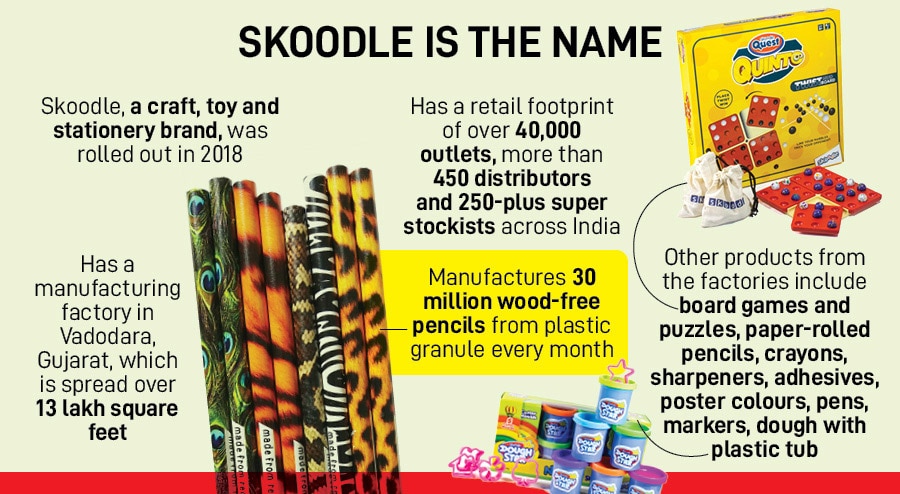
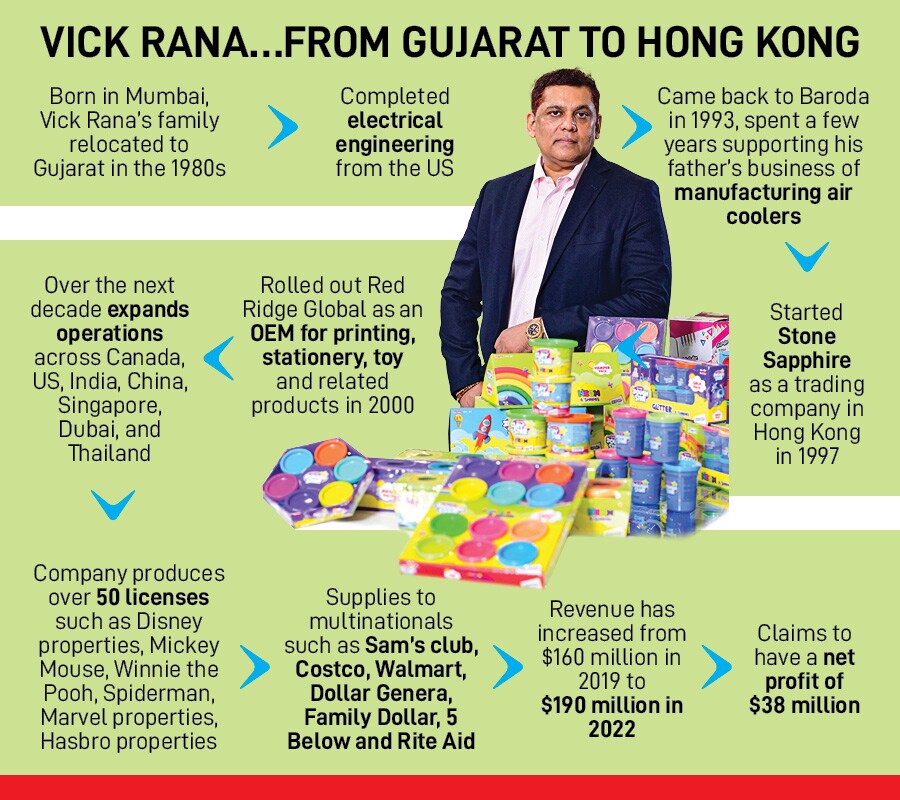
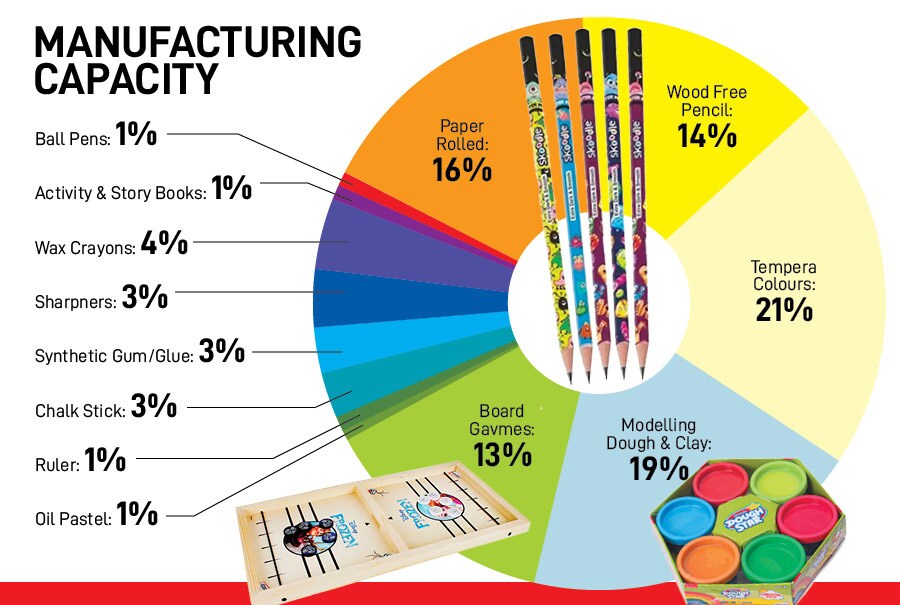

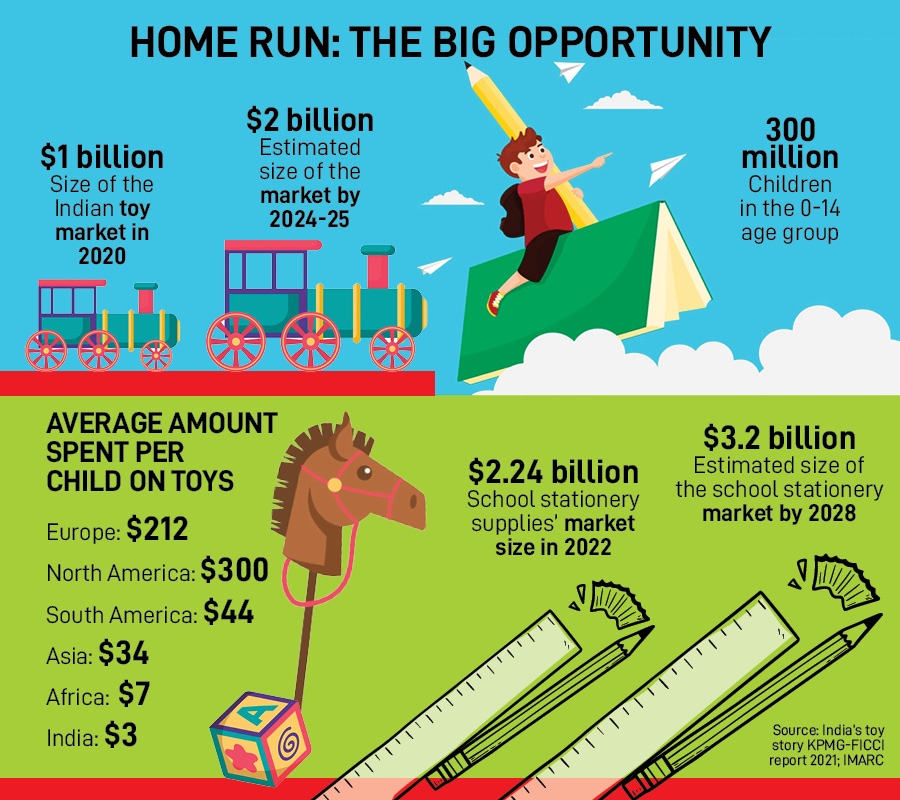

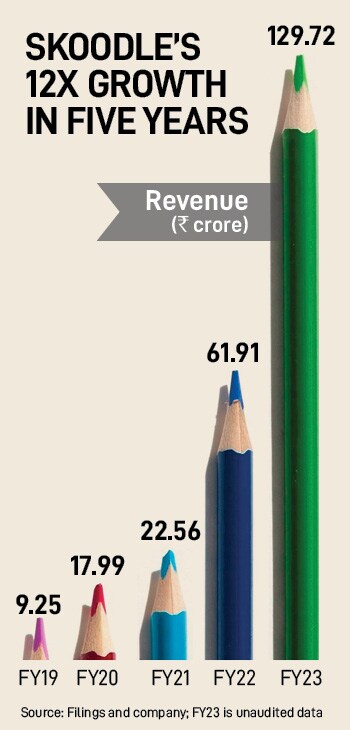 But then there are daunting challenges as well. For Skoodle, the biggest task is building brand awareness. Though the brand has grown at a fast clip, it has come on the back of its retail clout, and not marketing and branding push. “Stationery is no longer a commodity play," reckons Ashita Aggarwal, marketing professor at SP Jain Institute of Management and Research. The days of procuring products and pushing them through the retail channels are over. “It’s now a pull and not a push," she says, adding that Skoodle is still in the early days of building that pull.
But then there are daunting challenges as well. For Skoodle, the biggest task is building brand awareness. Though the brand has grown at a fast clip, it has come on the back of its retail clout, and not marketing and branding push. “Stationery is no longer a commodity play," reckons Ashita Aggarwal, marketing professor at SP Jain Institute of Management and Research. The days of procuring products and pushing them through the retail channels are over. “It’s now a pull and not a push," she says, adding that Skoodle is still in the early days of building that pull.